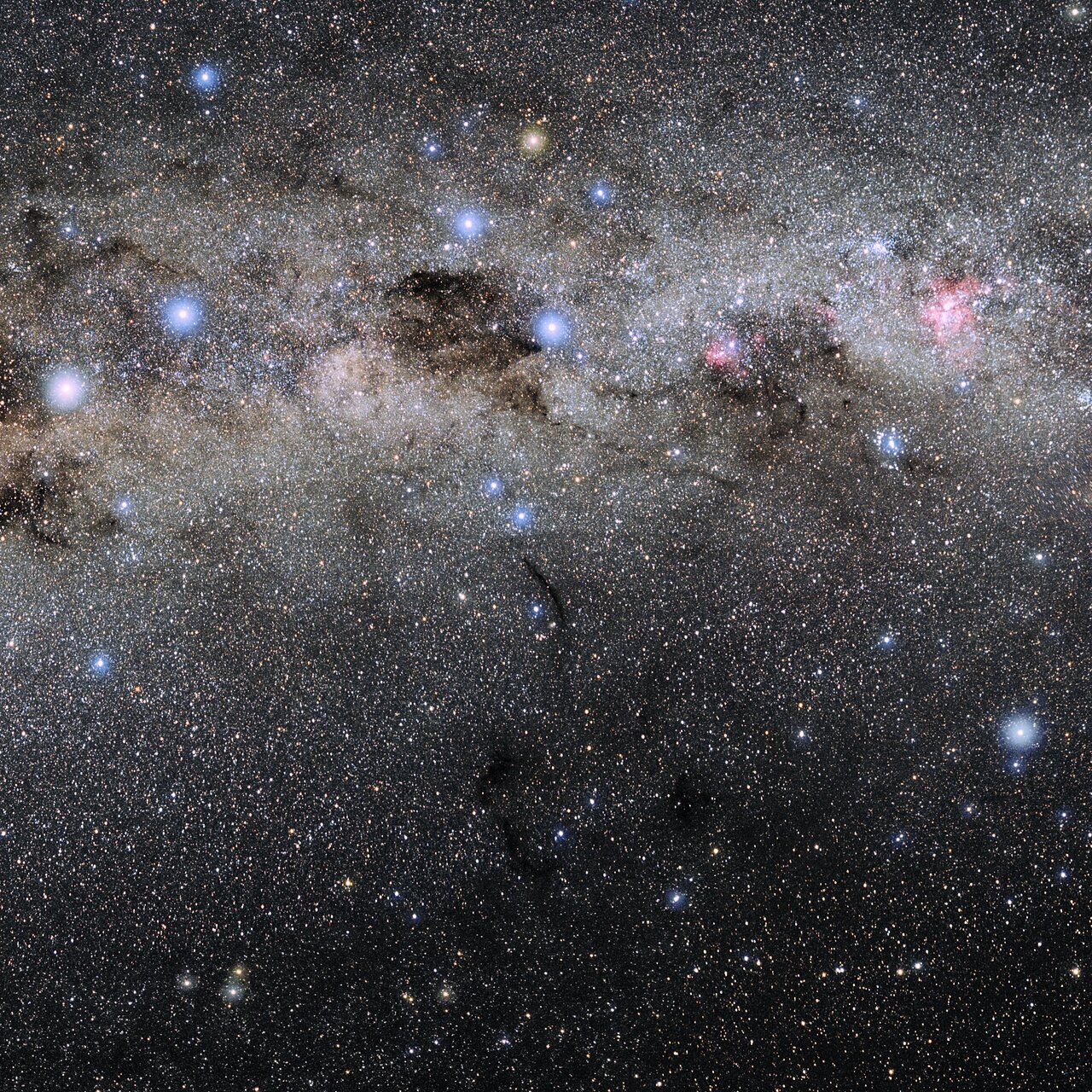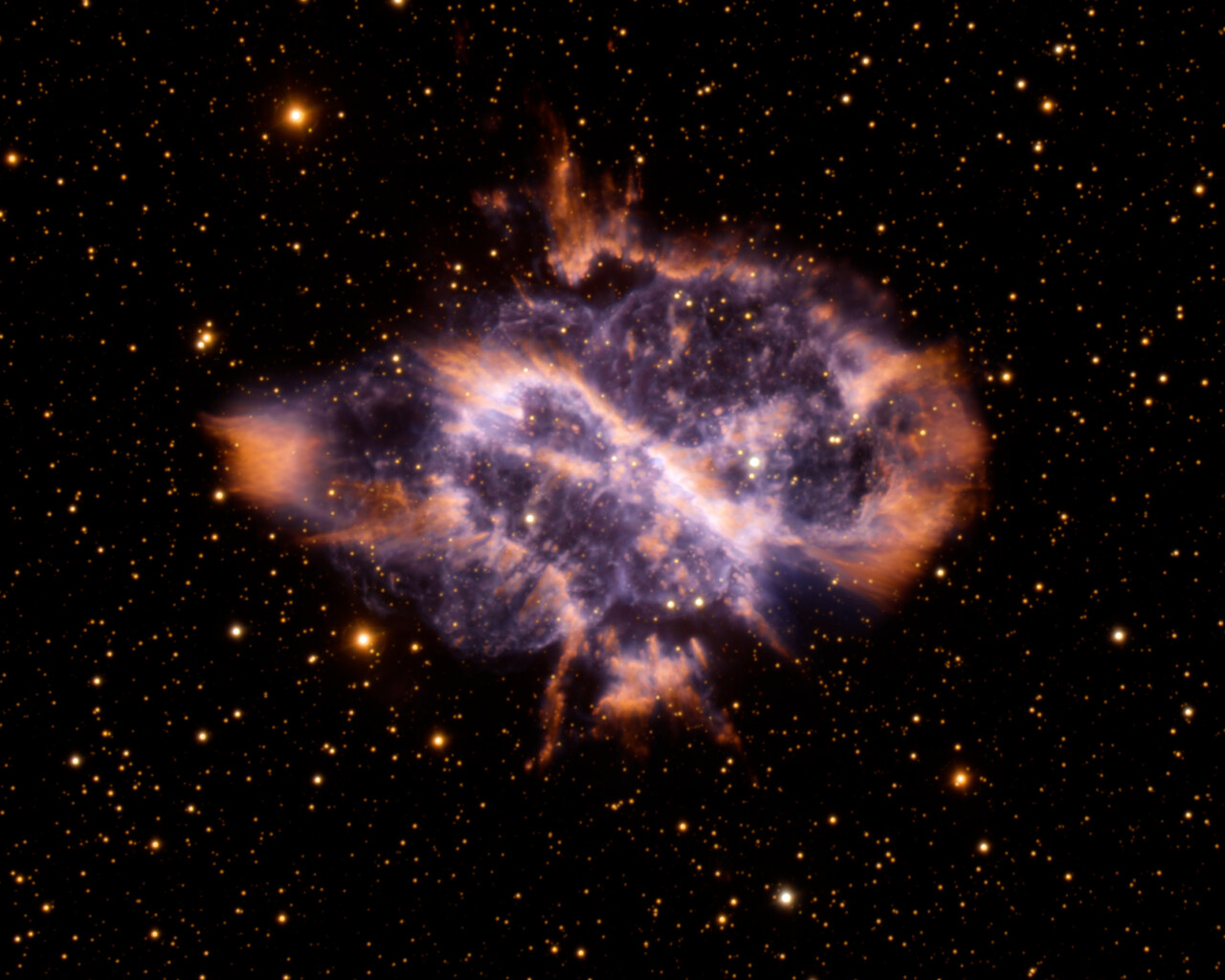Musca
Origin
Musca (Latin for 'the fly') is a small constellation in the deep southern sky. It was one of 12 constellations created by Petrus Plancius from the observations of Pieter Dirkszoon Keyser and Frederick de Houtman, and it first appeared on a celestial globe 35 cm (14 in) in diameter published in 1597 (or 1598) in Amsterdam by Plancius and Jodocus Hondius.
Bright Stars
Musca only contains one star brighter than 3rd magnitude, and as such is very difficult to see with the naked eye.


 Photo of the constellation Musca produced by NOIRLab in collaboration with Eckhard Slawik, a German astrophotographer.
The annotations are from a standardized set of 88 western IAU constellations and stick figures from Sky & Telescope. Please find here a non-annotated version of the image.
Photo of the constellation Musca produced by NOIRLab in collaboration with Eckhard Slawik, a German astrophotographer.
The annotations are from a standardized set of 88 western IAU constellations and stick figures from Sky & Telescope. Please find here a non-annotated version of the image.
Credit: E. Slawik/NOIRLab/NSF/AURA/M. Zamani
Notable Objects
The constellation Musca contains the following objects:
- NGC 5189 is a magnitude-8.2 planetary nebula about 1800 light-years away.
- NGC 4463 is a 7th-magnitude open cluster about 3400 light-years distant.
- NGC 4833 is a globular cluster shining at magnitude 7.8 and about 21,000 light-years away.




